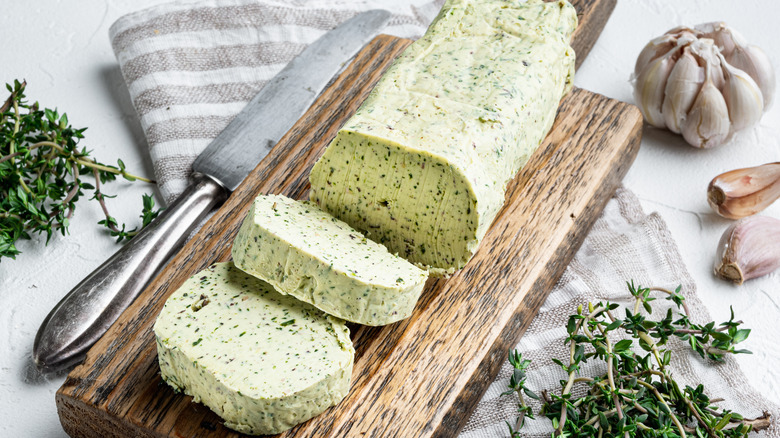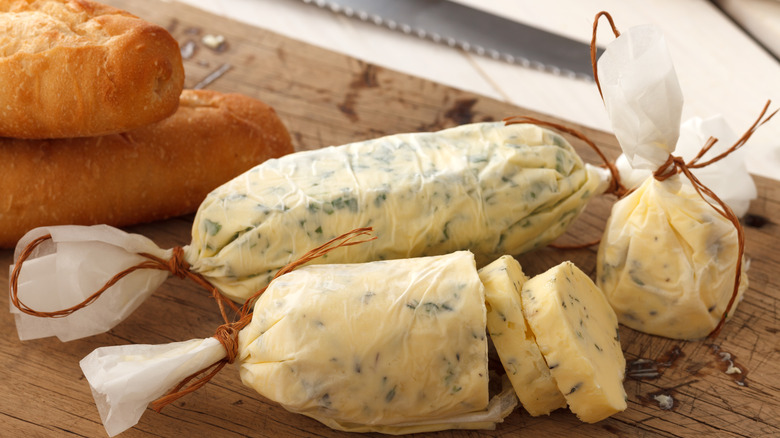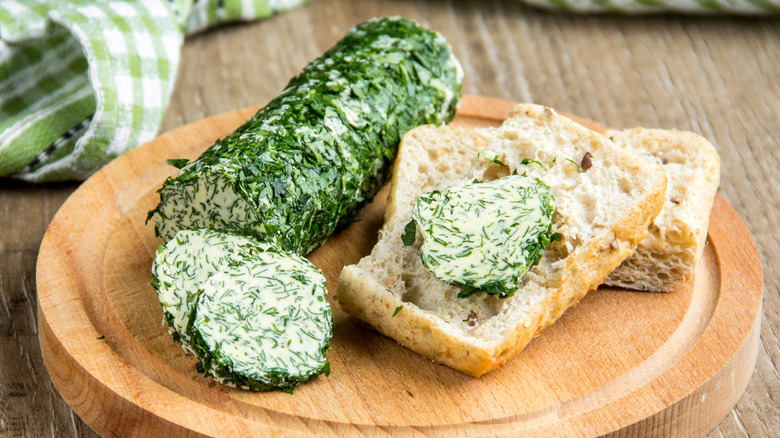What Is Compound Butter And What Can You Use It For?
Slathered, melted, or browned, the versatility of butter is endless. On its own, salted or unsalted, butter gives any dish the extra bit of richness and flavor it may be missing. It's the reason pie crusts are flaky, cookies are tender, and sauces are smooth. Moreover, if the recent wave of butter boards has taught us anything, it's that butter's delicious simplicity pairs well with a myriad of ingredients.
Butter's ability to heighten the tastiness of almost everything makes it the perfect starting point for any flavor combination imaginable. This is why compound butter works. What's compound butter? It's the simple combination of butter and something else, traditionally herbs or spices. This might sound incredibly basic, and it is — yet it can transform a dish. Compound butter is downright easy to make, yet it imparts a flavor that is anything but. After creating it once, you won't need an excuse to create compound butter again — and we're here to teach you how to do it.
What is compound butter?
Compound butter is one of the most versatile things to keep on hand. Every modern cook should master it — and luckily, pretty much anyone can. To put it simply, compound butter is seasoned butter. The possibilities are endless: You can combine butter with classic choices like garlic and parsley, or more adventurous combinations, like truffles. Sweet compound butter is also a possibility — think cinnamon and sugar. The only limit is your imagination.
Combining your unseasoned butter with your choice of ingredients can be done in a number of ways. You can do it with nothing more than a bowl and a spoon, or even your own two hands. Some cooks like to use a food processor or a blender. Others like to whip the butter into an airy spread. There's no right or wrong way — all of these techniques lead to deliciously flavored butter. The end result is a foodstuff that can be used to elevate and enhance the flavor of pretty much any dish. Compound butter is, simultaneously, simple to make, yet sure to add immense complexity to your cooking, without requiring you to learn a new technique.
How to use and preserve compound butter
Compound butter can be used to heighten the flavor of pretty much anything: Vegetables, seafood, grilled meats, and roasted potatoes are all enhanced by compound butter. "It's a nice way to elevate dishes beyond just their traditional elements," chef-instructor Joshua Resnick told Salon, "because you can add something really special to it, but it's in a way that's easy." It's especially good as a finishing touch, added right before serving. Spread it on a slice of warm bread, melt it over a perfectly cooked piece of salmon, or mix it in with hot pasta.
How do you keep compound butter around long term? After you've made it, shape your compound butter into a log, and wrap it tightly in plastic wrap or parchment paper. Chill it in the fridge until firm, or freeze it for longer storage. Be sure to label it, so you know how long it's been around. With a little bit of creativity and experimentation, you can create countless variations of compound butter and transform even the simplest dishes into something truly extraordinary.


